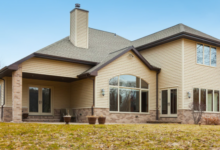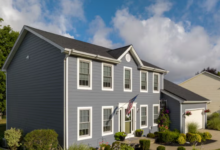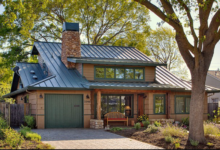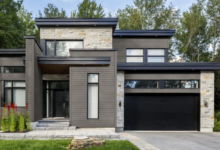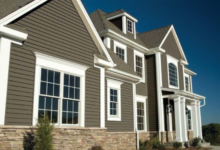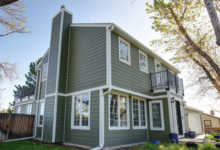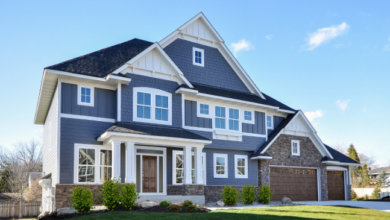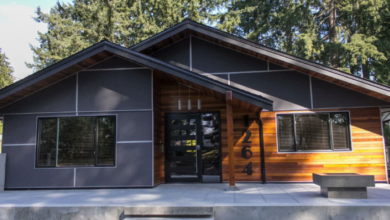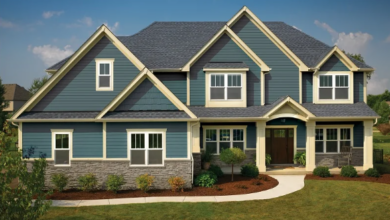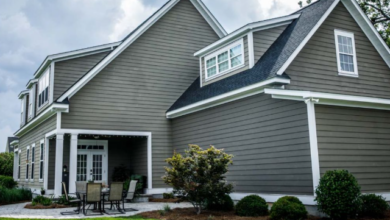House Siding Insurance Claims: Guide to Protect Your Home
House Siding Insurance Claims – Learn how to navigate house siding insurance claims effectively. Discover top products to safeguard your home, their benefits, and where to purchase them.
House Siding Insurance Claims: A Comprehensive Guide to Protecting Your Home

Maintaining your home’s exterior is crucial, not only for aesthetics but also for structural integrity. When unexpected damage occurs to your house siding, understanding how to navigate insurance claims can save you time and money.
This guide will provide detailed information on house siding insurance claims, highlight top products to protect your home, and offer actionable steps to ensure you’re well-prepared.
Understanding House Siding Insurance Claims
House siding serves as the first line of defense against environmental elements. When damaged, it can lead to more severe issues if not addressed promptly. Here’s what you need to know:
-
Types of Damage Covered: Most homeowners insurance policies cover sudden and accidental damage, such as that caused by storms, fire, or vandalism. However, damage due to neglect or normal wear and tear is typically not covered.
-
Filing a Claim: Document the damage with photos, contact your insurance provider promptly, and provide all necessary documentation. An adjuster will assess the damage to determine coverage.
-
Claim Denials: Claims can be denied if the damage is deemed preventable or due to maintenance neglect. It’s essential to understand your policy’s specifics to avoid unexpected denials.
Benefits of Protecting Your Home with Quality Siding Products
Protecting your home with quality siding products offers a multitude of benefits, extending beyond mere aesthetics. Here’s a comprehensive overview:
1. Enhanced Weather Protection:
- Shielding from Elements: Quality siding acts as a robust barrier against rain, snow, wind, hail, and intense sunlight, preventing moisture intrusion and structural damage.
- Moisture Control: Proper siding installation and materials prevent water seepage, which can lead to mold growth, rot, and structural decay.
- Wind Resistance: Durable siding can withstand strong winds, preventing damage to the home’s exterior and interior.
2. Increased Energy Efficiency:
- Insulation: Some siding products, particularly insulated vinyl and fiber cement, enhance a home’s thermal performance, reducing energy consumption and lowering utility bills.
- Temperature Regulation: Quality siding helps maintain a consistent indoor temperature, reducing the strain on heating and cooling systems.
3. Improved Durability and Longevity:
- Extended Lifespan: Quality siding materials, such as fiber cement and metal, are designed to withstand harsh conditions, ensuring long-term protection and reducing the need for frequent replacements.
- Reduced Maintenance: Durable siding requires minimal maintenance, saving homeowners time and money on repairs and upkeep.
- Pest Resistance: Materials like vinyl and fiber cement resist insect infestations, preventing damage to the home’s structure.
4. Enhanced Aesthetic Appeal:
- Curb Appeal: Quality siding enhances a home’s curb appeal, increasing its value and creating a welcoming appearance.
- Variety of Styles and Colors: Siding is available in a wide range of styles, colors, and textures, allowing homeowners to customize their home’s exterior to their preferences.
- Improved Resale Value: A well-maintained and aesthetically pleasing exterior can significantly increase a home’s resale value.
5. Increased Home Value:
- Return on Investment: Investing in quality siding can provide a significant return on investment by enhancing the home’s value and reducing long-term maintenance costs.
- Improved Home Security: Sturdy siding can deter intruders and provide an extra layer of security.
6. Fire Resistance:
- Enhanced Safety: Certain siding materials, such as fiber cement and metal, offer fire resistance, providing an extra layer of protection against fire hazards.
7. Noise Reduction:
- Sound Dampening: Some siding materials, especially insulated options, can help reduce outside noise, creating a quieter and more peaceful indoor environment.
In summary, protecting your home with quality siding products offers a multitude of benefits, from enhanced weather protection and energy efficiency to improved durability and aesthetic appeal. It’s a wise investment that can safeguard your home and enhance its value for years to come.
Top Products to Protect Your Home’s Exterior
Choosing the right siding products is essential for long-term protection. Here are five top-rated options:
1. James Hardie Fiber Cement Siding
James Hardie Fiber Cement Siding is renowned for its durability and resistance to various environmental factors.
-
Features:
- Fire-resistant material
- Resistant to rot and pests
- Available in various styles and colors
-
Pros:
- Long lifespan
- Low maintenance
- Enhances home value
-
Cons:
- Higher initial cost
- Requires professional installation
-
Price: Approximately $10 per square foot, including installation.
2. CertainTeed Vinyl Siding
CertainTeed Vinyl Siding offers an affordable and versatile option for homeowners.
-
Features:
- Fade-resistant colors
- Withstands various weather conditions
- Insulated options available
-
Pros:
- Cost-effective
- Easy to install
- Low maintenance
-
Cons:
- Less durable than fiber cement
- Can crack in extreme temperatures
-
Price: Ranges from $2 to $7 per square foot, depending on style and insulation.
3. LP SmartSide Engineered Wood Siding
LP SmartSide offers the aesthetic appeal of traditional wood with enhanced durability.
-
Features:
- Treated engineered wood for increased strength
- Resistant to termites and fungal decay
- Variety of textures and finishes
-
Pros:
- Natural wood appearance
- Impact-resistant
- Lighter than fiber cement
-
Cons:
- Requires periodic painting
- Higher maintenance than vinyl
-
Price: Approximately $2 to $4 per square foot, excluding installation.
4. Mastic Quest Vinyl Siding by Ply Gem
Mastic Quest Vinyl Siding combines durability with a wide range of aesthetic options.
-
Features:
- Double-thick nail hem for stability
- Available in numerous colors and profiles
- Designed to withstand high winds
-
Pros:
- Low maintenance
- Affordable
- Easy to clean
-
Cons:
- May fade over time
- Less impact-resistant than other materials
-
Price: Approximately $3 to $6 per square foot, installed.
5. Royal Building Products Celect Cellular Composite Siding
Celect Cellular Composite Siding offers premium performance with a seamless appearance.
-
Features:
- Cellular composite material mimics real wood
- Resistant to mold, mildew, and pests
- Interlocking joints for seamless installation
-
Pros:
- High durability
- Low maintenance
- Excellent insulation properties
-
Cons:
- Premium price point
- Limited color options
-
Price: Approximately $10 to $14 per square foot, installed.
Comparison Table of Siding Products
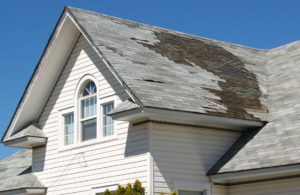
| Product | Use Case | Pros | Cons | Price (per sq ft) | Features |
|---|---|---|---|---|---|
| James Hardie Fiber Cement Siding | High durability needs | Long lifespan, low maintenance | Higher cost, professional installation required | ~$10 (installed) | Fire-resistant, rot and pest resistant |
| CertainTeed Vinyl Siding | Budget-friendly options | Cost-effective, easy installation | Less durable, can crack in extreme temperatures | $2 – $7 | Fade-resistant, various styles |
| LP SmartSide Engineered Wood Siding | Natural wood appearance | Impact-resistant, lighter weight | Requires painting, higher maintenance | $2 – $4 | Treated for strength, termite resistant |
| Mastic Quest Vinyl Siding by Ply Gem | Versatile aesthetics | Low maintenance, affordable | May fade, less impact-resistant | $3 – $6 | Double-thick nail hem, wind resistant |
| Royal Celect Cellular Composite Siding | Premium performance | High durability, excellent insulation | Premium price, limited colors | $10 – $14 | Mold and pest resistant, seamless look |
How to Purchase and Where to Buy
Investing in quality siding is a significant decision. Here’s how you can proceed:
-
Assess Your Needs: Determine your budget, desired aesthetics, and durability requirements.
-
Consult Professionals: Engage with siding contractors to get recommendations tailored to your home.
-
Obtain Quotes: Request quotes from multiple suppliers to compare prices and services.
-
Purchase: Once decided, you can purchase through authorized dealers or directly from manufacturers’ websites.
Where to Buy:
- James Hardie Fiber Cement Siding: Available through James Hardie’s official website or authorized local dealers.
- CertainTeed Vinyl Siding: Purchase via [CertainTeed’s website](https://www.certainteed.com /siding/) or home improvement stores like Home Depot and Lowe’s.
- LP SmartSide Engineered Wood Siding: Find it through LP Building Solutions or local lumber yards.
- Mastic Quest Vinyl Siding by Ply Gem: Available at Ply Gem’s website or major retailers.
- Royal Building Products Celect Cellular Composite Siding: Purchase directly from Royal Building Products or select distributors.
